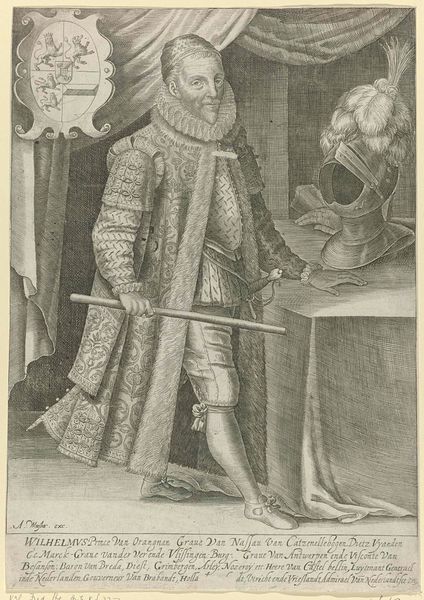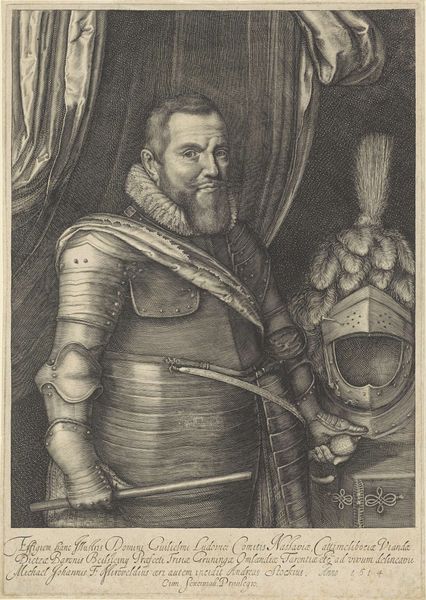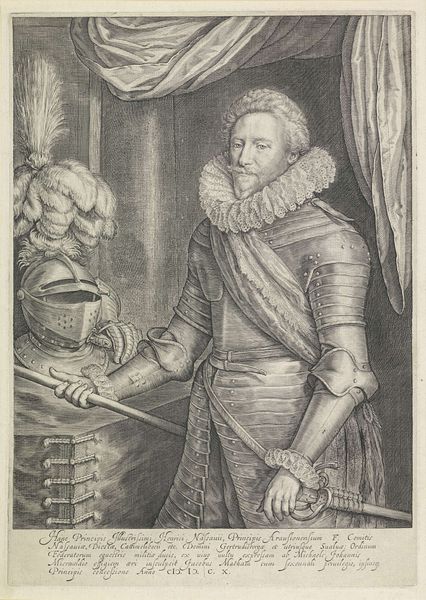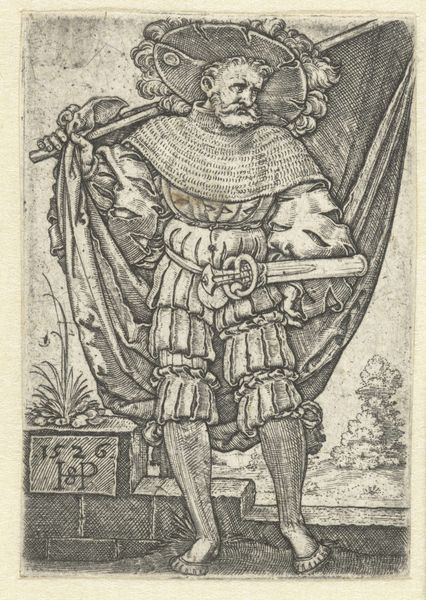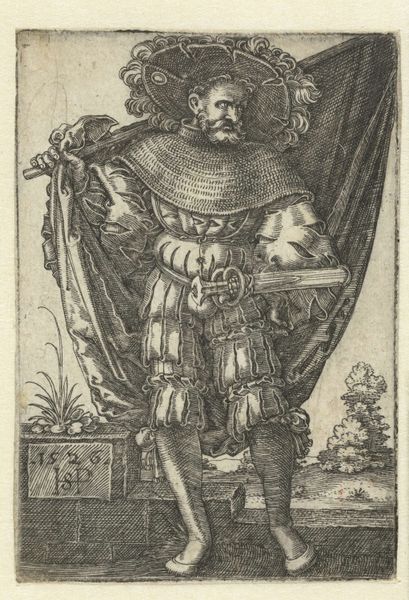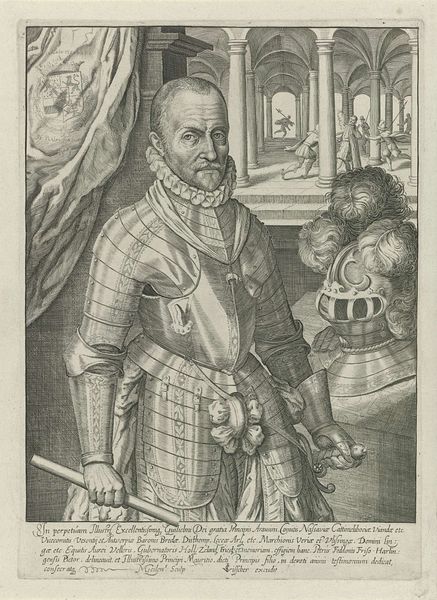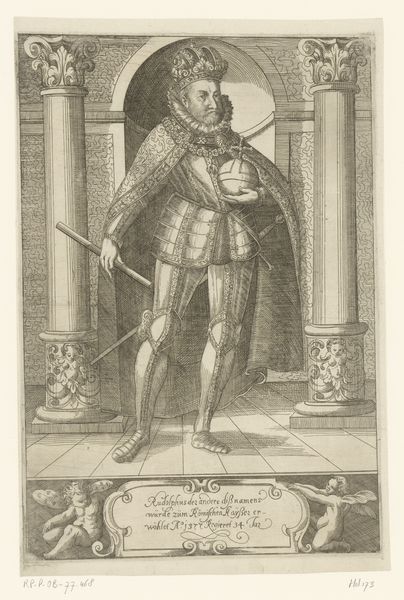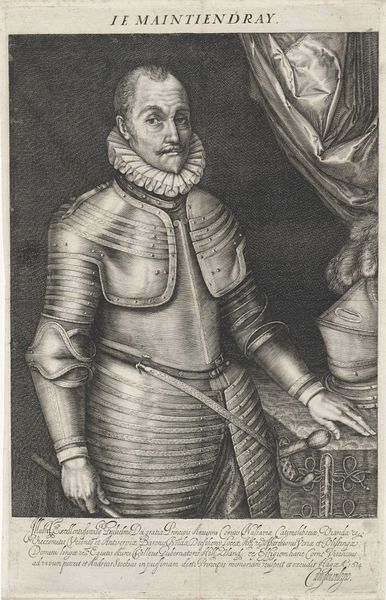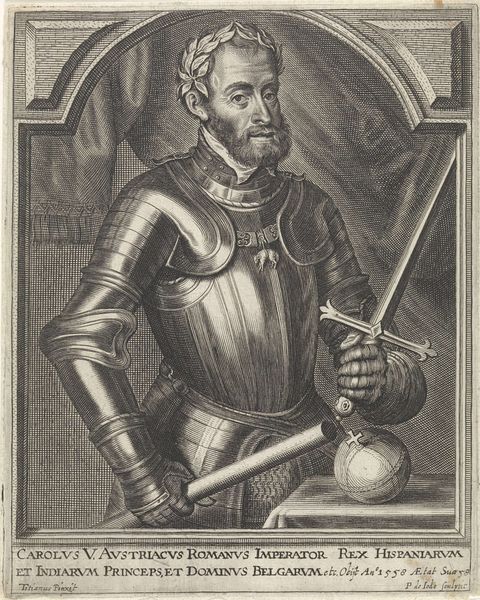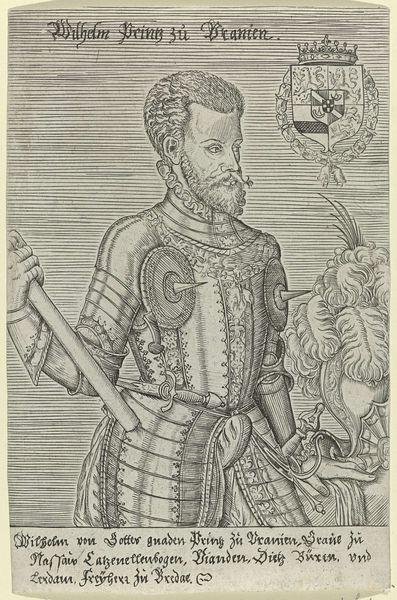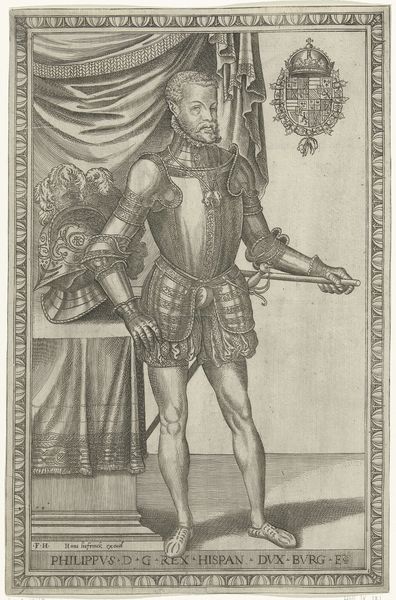
Portret van Willem Lodewijk, graaf van Nassau-Dillenburg 1614
0:00
0:00
print, metal, engraving
#
portrait
#
baroque
#
dutch-golden-age
# print
#
metal
#
figuration
#
line
#
history-painting
#
engraving
#
realism
Dimensions: height 275 mm, width 217 mm
Copyright: Rijks Museum: Open Domain
Curator: This is a print, a metal engraving specifically, dating back to 1614. It’s a portrait of Willem Lodewijk, Count of Nassau-Dillenburg, created by Nicolaes van Geelkercken. Editor: My first impression? Imposing! The detail in the armor is astonishing. There’s almost a coldness, a severity, to the whole image. Curator: Consider the time in which it was made. Printmaking allowed for the mass dissemination of images, think about how this served the ruling classes. Portraits such as these were about constructing and perpetuating an image of power and legitimacy. What details jump out at you in terms of material production? Editor: Well, look at the intricacy of the etching. Notice the way the artist uses hatching and cross-hatching to define form and texture in the metalwork. Consider the socio-economic conditions that made these detailed processes, like crafting the metal plates and applying the ink, possible at the time. It is work-intensive manual labor, but not considered so once finalized as “art”. Curator: And think about Willem Lodewijk himself. He was Stadtholder of Friesland, Groningen and Drenthe and served in the Dutch army during the Eighty Years' War. So, there’s a lot to unpack in terms of how this image represents not just an individual, but a pivotal figure in a time of war and massive sociopolitical change in the Netherlands. The stiff pose and stern look, the armor itself, project a sense of unyielding strength and authority. The way the composition directs the gaze downwards could imply looking towards the printing. Editor: Exactly, this wasn't just about creating a likeness. This image participates in and helps further develop an identity, his identity, and the wider nationalist movement at the time, contributing towards a national ideal of strong Protestant leadership against Spanish oppression. This makes the labor of image production that much more relevant as a driving force behind shaping sociopolitical understandings of class, status, and power. Curator: Looking closely, the image is laden with markers of status - an almost obsessive display of power and wealth. But it goes further. How does this formal and symbolic approach, embedded in materials, tell the narrative about state-making, and more broadly, of image-making? Editor: By considering art history alongside political history and contemporary theory, we can more closely understand these artworks. It shifts the portrait from simply being the picture of an important figure, to becoming a case study in the construction of power, gender, and class identities. Curator: Thinking about this through a materialist lens allows us to analyze the actual labor that went into its production, making it very relevant for today's discourse around craft. Editor: Indeed. It challenges a traditional view of this kind of stately portraiture and reminds us of the context that shaped the identity and legacy of this man and the many laborers who contributed to this image's legacy.
Comments
No comments
Be the first to comment and join the conversation on the ultimate creative platform.
